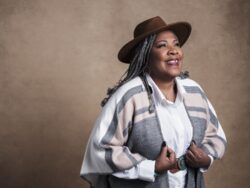
About our guest author: Melody Starya Mobley’s experiences as the first black woman serving as a forester for the USDA are remarkable: both for the firsts she embodies and for the years of abuse and oppression she experienced within that system.
Now, Melody shares her personal stories to create positive change for groups historically excluded from accessing American natural spaces.
With the few federal protections that exist currently being stripped away, it’s more important than ever for stories like these to be told. To read more of Melody’s writing, visit her website.
Image credit: Kirth Bobb
I often volunteer to teach science and math to elementary school-aged children in the Washington, D.C., metropolitan area. My favorite thing to do is take the children outside—to let nature be my classroom. I teach them to use simple tools to collect data that opens their eyes and minds: a tree height, age, size, or species.
Use the right tools to open up young minds.
The tools—a clinometer, an increment borer, a diameter tape, a plant key, and a compass—help them feel like scientists, but I believe it’s being outdoors that really opens their minds. And, with transportation severely limited, we use the school campus as our laboratory. Some of the inner-city schools don’t have wide, open campuses, but most of them do have a tree here or there for us to study.
I feel at peace. – Elementary student in nature
Sometimes I take the children outside with nature journals as their tools. I ask them to simply be quiet, observe their feelings, and record them in their journals. What they share with the group is often profound. They say things like they feel at peace—often hard to get in today’s world where parents often work two jobs, resources are limited, and worries are many. They say they feel like they are in a sacred space—a church, a temple, a mosque. Worries just fall away.
Go outside to enter the best classroom.
The children’s entire demeanor changes once we get outside. Yes, some kids love to play and goof off. But most of them take their work seriously, especially if we do get to go on a field trip to a forest. Their eyes open wide and they listen carefully. It’s like gold nuggets are falling out of my mouth. They pay close attention, much more than I ever receive when we are in an indoor classroom.
Nature provides sacred spaces for learning.
I believe that we wait too long to expose children to the benefits of being in nature—and from considering natural resource professions. A quick mention by a guidance counselor in high school is too late. By the time they are in high school, their minds are already set on a profession or they have no idea at all what might be available in the outdoors.
Regardless of the profession they choose, nature can always be a sacred space, and a space where children can get excited about learning even in the face of everything else happening in the world.
Nature can always be a sacred space […] where children can get excited about learning. – Melody Mobley
![]()
Read more of Melody’s writings
on the American Green blog.
